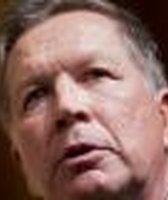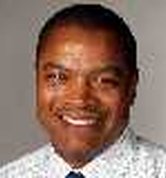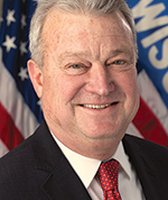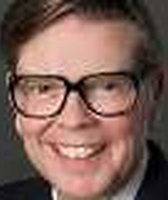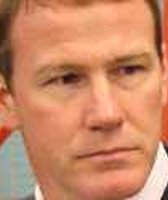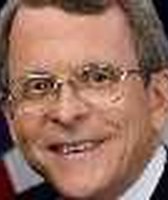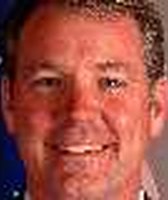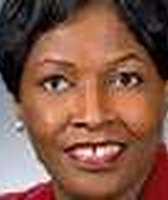Stand up for the facts!
Our only agenda is to publish the truth so you can be an informed participant in democracy.
We need your help.
I would like to contribute
Gov.-elect John Kasich says Ohio's in-classroom education spending doesn't make the grade
Incoming governor John Kasich says he has identified a major flaw in Ohio’s public school system: too much money is spent on administrator salaries and far too little on student instruction in the classroom.
"Ohio ranks 46th in the country in putting dollars in the classroom," Kasich said the day after the election, disdain in his voice as he drew on a familiar campaign stomping point. He was citing a ranking noted in a 2010 report from the Greater Ohio Policy Center and Brookings Institution.
By that measure, 45 states proportionly spend more in the classroom than Ohio, including neighboring Pennsylvania (17th), Kentucky (31st), and West Virginia (32nd).
Kasich is using the figure to mount a basis for setting his own education funding agenda while promising to scrap one established under current Gov. Ted Strickland. By stating how dismal the state is faring by this measure, Kasich hopes to win support for his own educational initiatives.
But is the ranking accurate? Could nearly every state in the country be applying more cents on the dollar in the classroom than Ohio? State teacher’s unions and other education leaders say the policy center report is misleading and inaccurate.
PolitiFact Ohio decided to take a look.
The policy center is a non-partisan policy research group focused on improving Ohio’s economy by strengthening its urban cores. It teamed this year with the nationally known Brookings Institution for its report "Restoring Prosperity: Transforming Ohio’s Communities for the Next Economy."
The policy center report recommended Ohio determine how to spend more money in the classroom. The center’s Executive Director Lavea Brachman said, "our starting premise is that if we spend less on administrative costs then we can spend more in the classroom."
Philip Trostel, professor of economics and public policy at the University of Maine, constructed the state-by-state education research for the policy center. He used data collected from the National Center for Education Statistics, an off-shoot of the U.S. Department of Education.
"It’s reliable data that is comparable from state to state," Trostel said. "The individual school districts report the data so it lessens the likelihood that one state is reporting differently from another state."
In-classroom spending includes items such as teacher salaries, textbooks and technological equipment. New York ranked highest, spending nearly 69 cents of every dollar in classrooms. Indiana ranked 50th at just over 54 cents on the dollar. Ohio, ranked 46th, spends 57.2 cents of every dollar in classrooms, the report found.
The reason Ohio ranks so low in this category, according to the report, is because its public school districts appear to spend a greater percentage of their funds on administrative costs, as compared to most other states.
In fact, Ohio’s spending on district administration for superintendents and other district-level executives is 49-percent higher than the national average, Trostel concludes in the report.
But the rankings are based on 2007-2008 school year data, the most recent state-by-state figures available from the national reporting clearinghouse. Two full school years have passed, and education leaders under the Strickland administration argue that changes the Democratic leader made to school funding made during that time would yield a much better funding record for Ohio.
"What is Kasich’s education plan?" Patricia Frost-Brooks, president of the Ohio Education Association wrote in a letter printed by newspapers around the state. "Kasich’s Website, stump speech and debate performance all repeat the same tired mantra: Ohio ranks 46th on money for the classroom. … The stats ignore the new school-funding formula as well as deep administrative cuts at the Ohio Department of Education."
The Ohio Department of Education said that it is difficult to duplicate Trostel’s state-by-state research to ensure its accuracy.
"We are unable to analyze the information that is being referenced because it is part of an unpublished study and we’re unsure of the data being used to arrive at the conclusion," said Scott Blake, a spokesman for the state Education Department.
In 2009, the state legislature approved Strickland’s evidence-based model school funding plan which the governor said would, among other things, eventually direct more dollars towards programs that help schoolchildren learn best. It also promises to ensure the state will spend more on public education to lessen the burden on local taxpayers.
But none of that particularly guarantees that Ohio will spend more money in the classroom, just that money being spent could be re-allocated for different instructional purposes.
Kasich has made it clear that he plans to eliminate Strickland’s funding model altogether and introduce his own.
With no recent national data available for comparison, the national ranking that the policy center bestowed on Ohio appears unchallenged. Even the Ohio Education Department admitted that the policy center report’s figures for Ohio appear to be close to accurate, though it can’t say for sure or measure the figures against other states.
It would, however, be useful for Kasich to acknowledge that the figures used for the ranking that he has repeatedly cited are more than two years old. That’s a key piece of information needed for context.
That’s why we rate Kasich’s statement Mostly True.
Our Sources
Gov.-elect John Kasich, post-election news conference remarks, Ohio Chamber of Commerce, Nov. 3, 2010
Interview with Philip Trostel, University of Maine professor, Nov. 23, 2010
Interview with Scott Blake, Ohio Department of Education spokesman, Nov. 23, 2010
Browse the Truth-O-Meter
More by Reginald Fields
Gov.-elect John Kasich says Ohio's in-classroom education spending doesn't make the grade
Support independent fact-checking.
Become a member!
In a world of wild talk and fake news, help us stand up for the facts.

